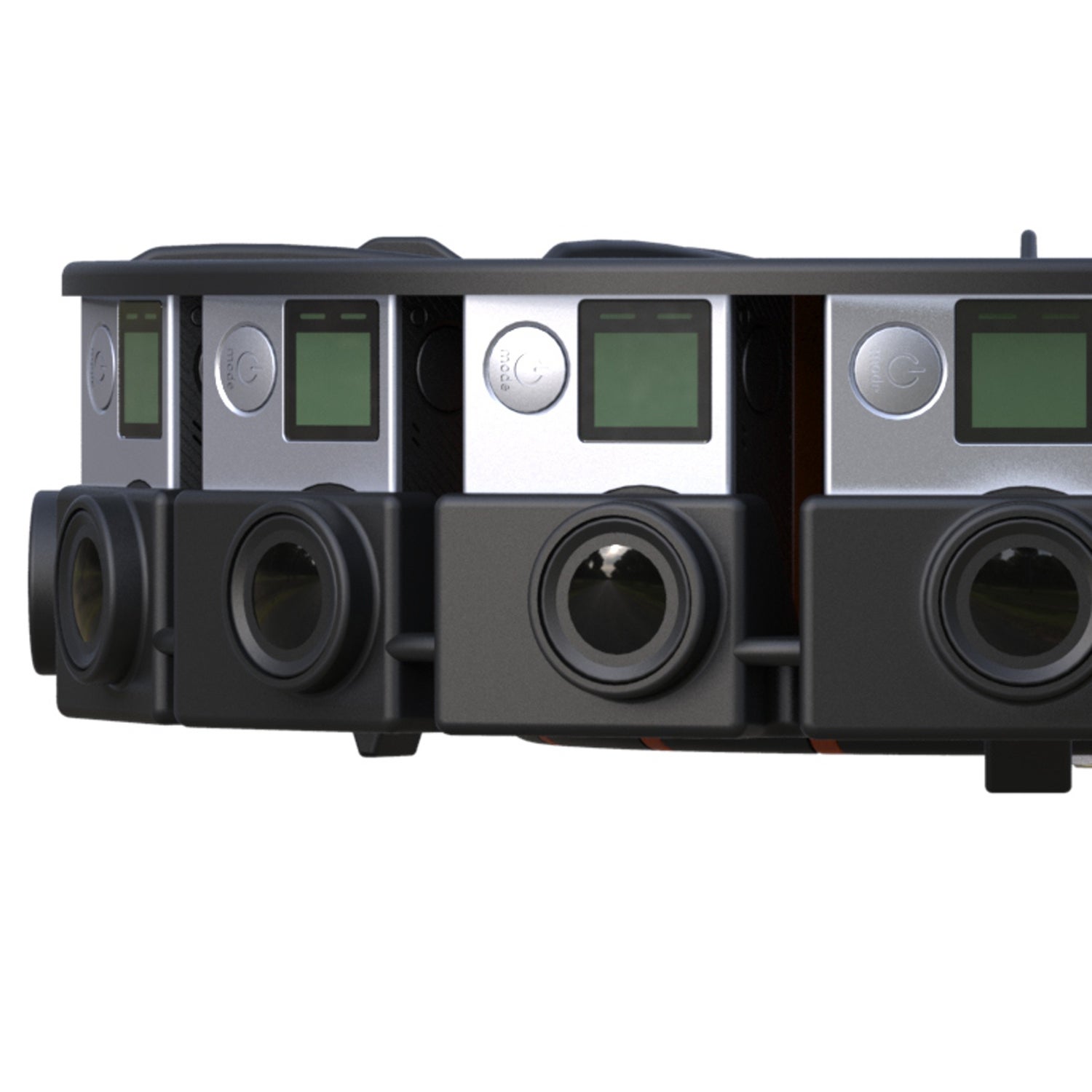On Wednesday evening, GoPro founder and CEO Nick Woodman announced that in the second half of 2015, the company will sell what it’s calling the Six-Camera Spherical Array—essentially a fancy camera mount that holds six Hero cameras to shoot immersive, 360-degree virtual-reality footage.
Now, there are other companies currently making 360-degree cameras. 360Fly, , , and sell all-in-one action cams that capture a completely spherical (or partially spherical) view, although most are still only available for pre-order. The VSN Mobil V.360 is available now, but while it’s fine for immersive, 360-degree panoramas, you don’t get the spherical footage needed for VR.��
But GoPro isn’t really competing against those aforementioned brands. Its new array is intended for professionals, with a price tag that puts it out of reach of your average weekend warrior. The price of the six Heros alone could run up to $3,000. For comparison, the other 360-degree cameras we’ve previewed cost between $300 to $600 each.��
Beyond the question of who’s buying, the real issue with 360-degree capture is uploading, editing, and viewing the footage. Six GoPros shooting 4K, or even “merely” 1080p at 60 frames per second? You may want to run and hide your desktop’s hard drive. And even if you have the requisite storage and computing horsepower to edit the shots, you’ll still need VR hardware like the Oculus Rift to actually watch it.
But GoPro has a solution. Two, in fact, although these again are intended for professionals only at the moment.��
On April 28, GoPro acquired a French video-software startup called Kolor. The company makes tools for auto-stitching 360-degree imaging (). I’d bet Kolor provides a new mode within GoPro’s already excellent desktop software for automatically stitching together multiple-camera-capture footage into a single clip. Or perhaps the Six-Camera Spherical Array hides its own onboard system that stitches the footage as it’s captured, which would be very cool.��
Google’s getting involved on the editing side, too. On Thursday, Google and GoPro announced a joint hardware-software venture at the 2015 Google I/O conference. This includes a 16-camera rig that uses Google’s , which the company claims solves many VR-footage issues, such as camera overlap and blurriness. It’s not going to be available to the public in the near-term, although you can expect Google to push out many Jump-sourced videos to its YouTube channel over the coming months.
As for viewing the footage shot on GoPro’s six-camera setup, the action-cam maker has touted Kolor’s apps for viewing immersive video on an ���ǰ� device.��But while such apps let you swipe through a spherically-shot movie, you don't get the same immersive feeling as you would if you watched the footage through a VR headset.��
Which you can get on the cheap if you so desire.��One inexpensive VR hack to bolster your surround-view experience is to use the Kolor app with one of Google’s , which .��
Finally, Woodman also mentioned that the long-rumored GoPro drone is finally coming to market in 2016. Put 360-degree capture and a UAV together and rumors of GoPro’s supposed market struggles might vaporize.��
Want more details? We do, too, and we expect to learn more this coming week at the GoPro-sponsored Mountain Games in Vail. Stay tuned.


